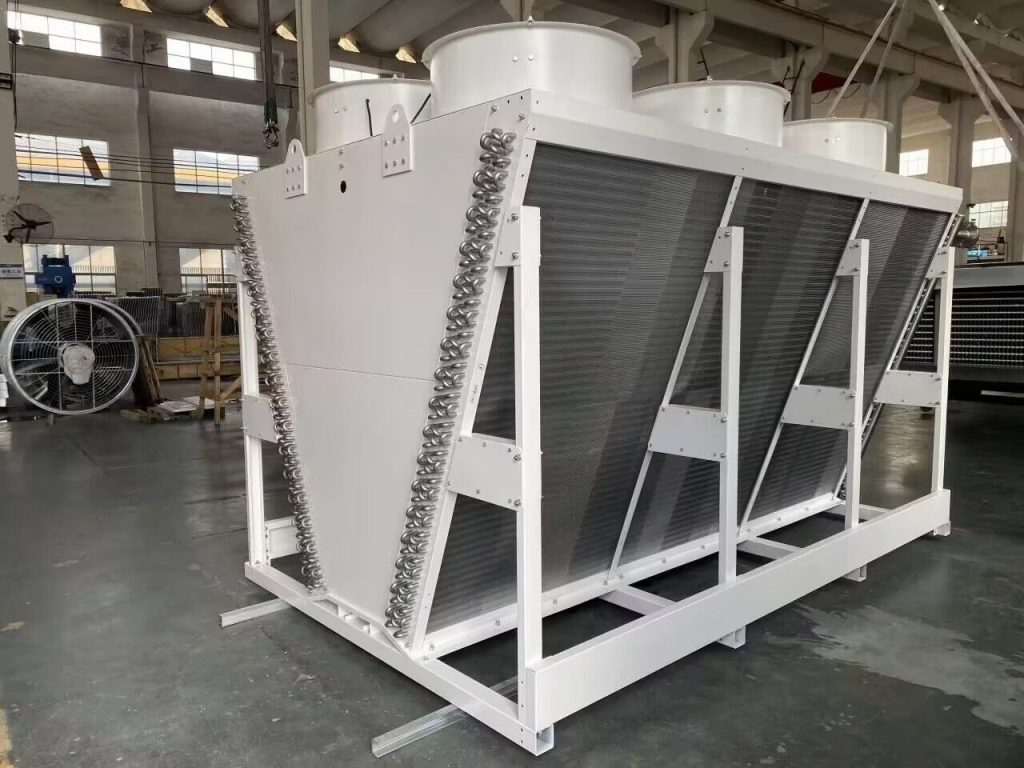A dry cooling tower is a heat rejection system used in industrial processes to cool fluids without evaporating water. Unlike wet cooling towers, which rely on water evaporation, dry cooling towers use air-cooled heat exchangers and fans to dissipate heat. This makes them ideal for regions with water scarcity or where water conservation is a priority.
How it works:
Closed-loop system:
Dry cooling towers operate in a closed-loop system, where a working fluid (usually water or a water-glycol mixture) circulates through heat exchangers.
Heat transfer:
Heat is transferred from the working fluid to the ambient air via the heat exchangers, which have extended fins to enhance heat transfer.
Air cooling:
Fans, either natural or mechanical draft, move air over the heat exchangers, carrying away the heat.
No water evaporation:
The key difference from wet cooling towers is that there is no direct contact between the working fluid and the ambient air, so no water evaporates.
Advantages of dry cooling towers:
Water conservation: They significantly reduce water consumption compared to wet cooling towers.
Reduced operating costs: No makeup water is needed, reducing operational costs.
Environmental friendliness: They minimize water discharge and associated environmental impact.
Applicable in various industries: Dry cooling towers are used in power plants, industrial cooling, solar energy systems, and HVAC applications.
Types of dry cooling towers:
Direct systems: Air cools the working fluid directly.
Indirect systems: A secondary fluid is used for heat exchange, enhancing efficiency and reliability.
